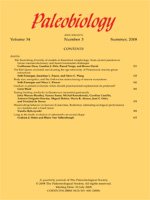An enigma of deep-sea biodiversity research is that the abyss with its low productivity and densities appears to have a biodiversity similar to that of shallower depths. This conceptualization of similarity is based mainly on per-sample estimates (point diversity, within-habitat, or α-diversity). Here, we use a measure of between-sample within-community diversity (β1H) to examine benthic foraminiferal diversity between 333 stations within 49 communties from New Zealand, the South Atlantic, the Gulf of Mexico, the Norwegian Sea, and the Arctic. The communities are grouped into two depth categories: 200–1500 m and >1500 m. β1H diversity exhibits no evidence of regional differences. Instead, higher values at shallower depths are observed worldwide. At depths of >1500 m the average β1H is zero, indicating stasis or no biodiversity gradient. The difference in β1H-diversity explains why, despite species richness often being greater per sample at deeper depths, the total number of species is greater at shallower depths. The greater number of communities and higher rate of evolution resulting in shorter species durations at shallower depths is also consistent with higher β1H values.
How to translate text using browser tools
31 October 2013
Ecological and evolutionary consequences of benthic community stasis in the very deep sea (>1500 m)
Martin A. Buzas,
Lee-Ann C. Hayek,
Stephen J. Culver,
Bruce W. Hayward,
Lisa E. Osterman
ACCESS THE FULL ARTICLE

Paleobiology
Vol. 40 • No. 1
Winter 2014
Vol. 40 • No. 1
Winter 2014




